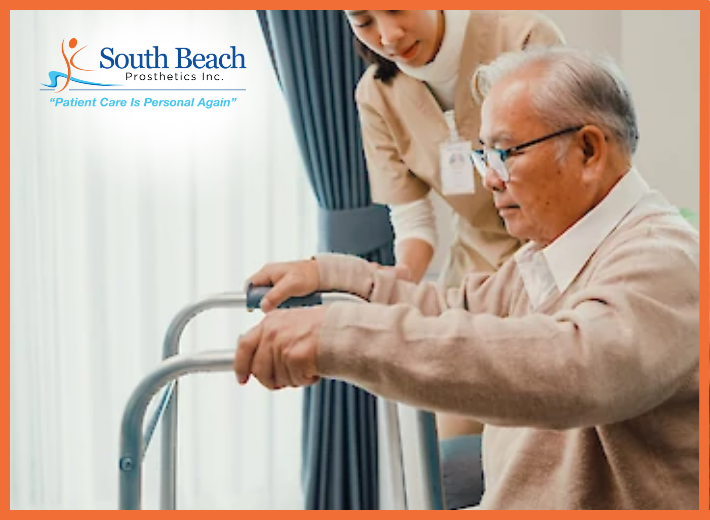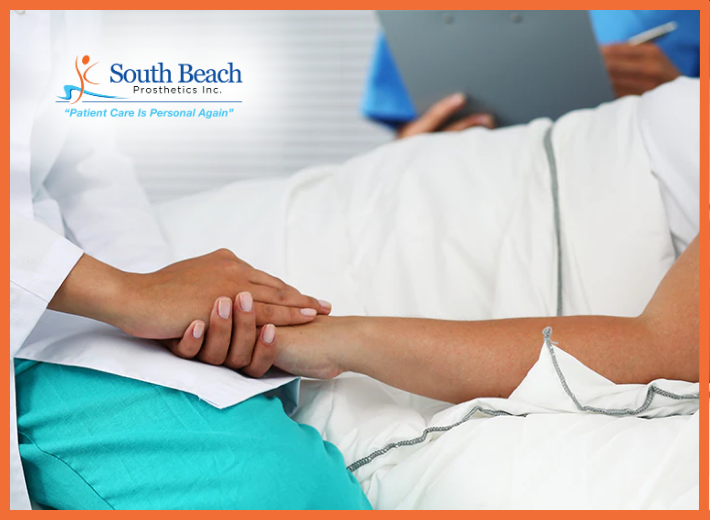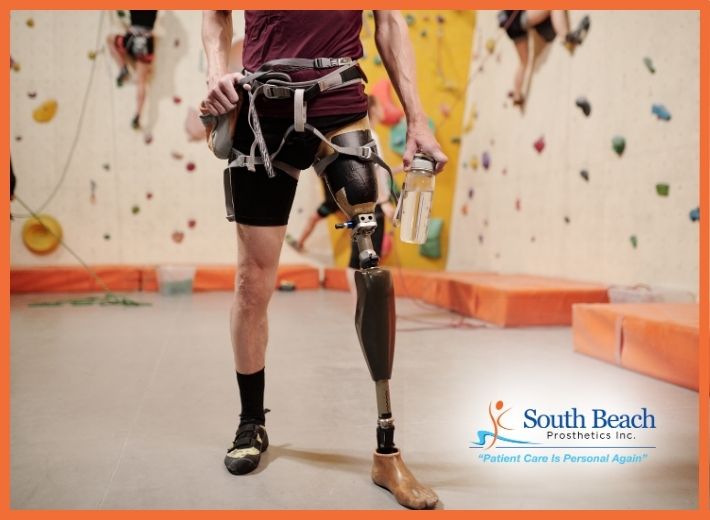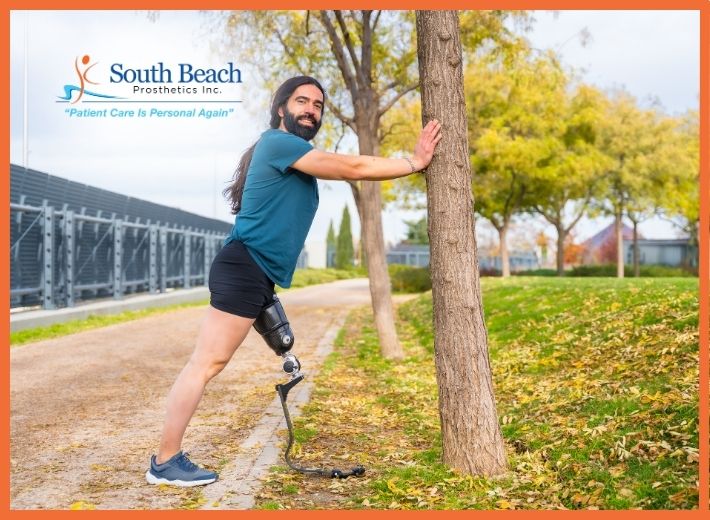Living with limb loss can be a challenging journey, but the advances in prosthetic technology have opened up new horizons of comfort and mobility for individuals who have experienced amputations. One of the foremost concerns for amputees is managing pain and discomfort. In this guide, we will explore the innovative solutions and strategies available for effectively managing secondary pain. REMEMBER — At South Beach Prosthetics, we aim for the ‘Perfect Fit’ every, single time. Just working with us can be your first step in reducing your pain and increasing your comfort.
Key to preventing secondary pain after limb loss is preventing complications. This means taking meticulous care of your residual limb, your prosthesis and your general health.
Because your residual limb is hidden under your prosthesis, paying close attention to how it looks when your prosthesis is off is very important. Developing habits of twice-a-day inspection and care is very important.
Also important is taking care of your prosthesis, liners and socks.
And what is meant by the term “general health”? This means eating well, getting physical exercise and rest and emotional well-being. It also means managing any health conditions as well as possible. If you have diabetes, this means keeping your glucose levels under good control. And it means maintaining a healthy weight, without swings of weight gain or loss.
General Guidelines for Taking Care of Your Residual Limb
It is hard to overstate the importance of taking care of your residual limb. Your healthcare team will give you instructions, such as these general rules:
- Wash your residual limb twice a day.
- Use mild, fragrance-free soaps, as they are the least likely to cause skin irritation.
- Do not use lotions on your residual limb unless there is a compelling reason to do so as advised by your prosthetist or by your doctors. When lotions are advised, use water-based lotions rather than alcohol-based, which tend to dry the skin.
- Wash your liner every night using a mild, fragrance-free soap that is recommended by the liner manufacturer or by your prosthetist.
- Do not wear a wet liner.
- If your amputation is below the knee, check the hard-to-see area behind your residual limb knee with a mirror.
- Report to your prosthetist the development of any blisters or reddened areas (that don’t go away when your prosthesis is off) on your residual limb.
Care for Your Prosthesis
- An ill-fitting prosthesis greatly increases your risk of secondary pain. The socket should be comfortable and practical.
- Always wear shoes with the same heel height as the one your prosthesis was aligned with originally to maintain the right alignment.
- You should check your prosthesis frequently for unusual signs of wear and tear and report concerns as soon as possible to your prosthetist.
- Pistoning occurs when the residual limb slips up and down inside the prosthetic socket while walking. This can cause the skin to pull and be damaged. This is generally due to poor socket fit and inadequate suspension. If you continue to experience pistoning after you have correctly applied your socket liner, contact your prosthetist to have your fit checked. To accommodate volume and shape changes of the residual limb, some sockets can be reduced and/or padded, thicker liners may be used or air bladders may be installed.
- Perspiration is normal but can cause heat rash and abrasions. When sweating occurs, you should immediately remove your prosthesis. Dry your liner and skin before putting your prosthesis on again.
Keep Moving
When a group of people with limb loss was surveyed, nearly 50 percent reported pain in their non-amputated limb and 62 percent reported low back pain. This is because after amputation other muscles and joints have to carry extra stresses and loads. These stresses can cause strain, inflammation and further pain. Additionally, low back and hip pain can increase symptoms of phantom pain.
Your physical therapist can help you design an appropriate exercise program. Regular exercise will help you strengthen and retrain your muscles. Besides walking, a good follow-up program may include back extension strengthening and balance exercises – important for helping to decrease the stresses to your low back and hips. You should try and see your therapist once a year or so for gait evaluation. If you slowly develop poor gait habits, it can cause back and/or hip pain.
Weight Management
Maintaining a healthy weight is important for everyone. It is even more important after your amputation. Even a five-pound weight gain or loss can make a difference in the fit of your prosthesis.
Eat a well-balanced diet and drink plenty of water. Not only will this help with weight management, but it will also help with maintaining healthy skin.
Ready to experience pain-free mobility and comfort with the latest prosthetic solutions? Contact us today at (888) 819-4721 and take the first step towards a life without limits! Follow us on Instagram @SouthBeachOP for more tips on prosthetic care.





